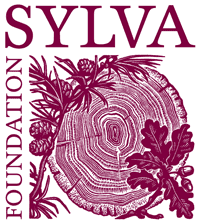In September, Sylva Foundation hosted a Summer School for young creative people to promote design and craft using home-grown timber. The inspiring report from the workshop is published today to coincide with Grown in Britain week.
Sylva Foundation cares passionately about trees and people, and at its Wood School in south Oxfordshire it has set out to nurture a wood culture, enhancing the potential of a home-grown timber supply while promoting the benefits of managing woodlands for people and nature. It is promoting excellence in creativity and craft using home-grown timber, and this year’s week-long Summer School was no exception. This inspiring event was the perfect vehicle to educate, collaborate, and innovate.
The concept of the 2021 Summer School was to bring together a group of passionate creative people and provide them with all of the necessary ingredients to explore, design, and create prototypes in the charity’s professional workshops.
A series of talks by industry leaders inspired and educated delegates about the potential of under-utilised home-grown timber, providing context for the fast-paced design-and-make experience which followed. The delegates were then encouraged and fostered a ‘thinking through making’ approach, supported by a brilliant team of tutors.
The added dimension of the group was that all identified as women or non-binary, creating a community of makers that went against the grain of most furniture craft courses, and indeed the wider industry. This led to some supportive conversations about gender and hopefully a group that will continue to support one another into the future.
Head of Wood School Joseph Bray commented:
Everyone involved was blown away by the experience and certainly, everyone involved went home exhausted yet inspired. The results were incredibly impressive and represent the hard work of this remarkable cohort.














